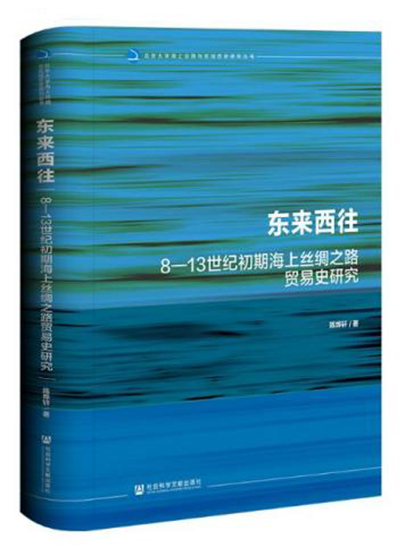Viewing maritime Silk Road in long duration

A Study of the Trade History of the Maritime Silk Road from the 8th to Early 13th Centuries
A Study of the Trade History of the Maritime Silk Road from the 8th to Early 13th Centuries, by Chen Yexuan, a Boya postdoctoral scholar from the Department of History at Peking University, breaks away from the confines of dynastic and regional history, and conducts a holistic and panoramic survey of the maritime trade spanning from the Western Pacific to the Western Indian Ocean from the 8th to 13th centuries.
Encompassing such a vast spatial scope entails addressing the three principal branches of traditional marine history studies: the Indian Ocean, the South China Sea, and East Asian waters. Within domestic academia alone, these branch fields have yielded significant scholarly outputs. From Feng Chengjun’s The History of Transportation in South China Sea, to the “East Asian waters” study of Ge Zhaoguang, and The History of Indian Ocean, which is the 18th volume of Studies of Marine History, substantial contributions have been made. However, beyond these “luxuriant trees,” there remains a need to see the “forest.”
In the mid-20th century, Fernand Braudel, a representative of the French Annales School, put forward the “longue durée” [long duration] theory in his great work on the history of the Mediterranean Sea, highlighting the advantage of the total history in the study of marine history. Inspired by Braudel, researchers of Asian maritime history subsequently proposed the “Asian Mediterranean,” which was a step forward on the road to holistic research. However, the so-called “Asian Mediterranean” or “Asian inland sea” was still limited to the waters around the Indian Ocean or East Asia. In the 21st century, certain research endeavors have attempted to run through the Indo-Pacific, but the period of attention is mostly concentrated in the late ancient and modern times, that is, after the onset of the Age of Exploration. This trend suggests an abundance of research materials and relatively straightforward operation.
The book focuses on the 8th century to the early years of the 13th century, a period in which human society was preparing for the Age of Exploration. It is generally believed that the Age of Exploration gave birth to the Industrial Revolution, which in turn initiated the wave of economic globalization. However, globalized coordination of economic production in fact appeared before the Age of Exploration.
In the middle ancient times, Arab merchants penetrated local markets throughout Europe and Asia and familiarized themselves with the products, handicraft costs, and commodity prices in each region, thus creating the possibility of trans-regional global production of commodities. Artifacts from the Nanhai [South China Sea] No. 1 shipwreck suggest that in the 12th century, certain high value-added handmade products might not have been entirely manufactured in a single location. Instead, their components were likely produced in more cost-effective regions in East, South, and West Asia, depending on the cost of raw materials. This suggests a sophisticated network of trade and production spanning across various regions in Asia during that period.
Luo Shuai is a research fellow from the School of History at Zhejiang University.
Edited by YANG LANLAN
